Students work is displayed below
1.2: b
1.3: b
1.4: b
1.5: a
1.6: a
1.7: a
1.8: b
1.9: a
1.10 Coefficients 1c: b0=2
1.11 Coefficients 1a: a1=0.24
1.12 Problem 1 comments: We can figure out the impulse response
and frequency response of given filter by using
Z-transform.
2.1: b
2.2: c
2.3 Coefficients 2b: b0=2, b1=-0.707
2.4 Coefficients 2a: a1=-1.414, a2=1
2.5 Problem 2 comments: The signal that has only one frequency
can be expressed as one component in the frequency
domain(ideal case).
3.1: c
3.2: b
3.3: a
3.4 Coefficients: b0=1, b1=-1.414, b2=1
3.5 Problem 3 comments: The h(n) have canceled out some of input
signal that the original signal was changed.
4.1: c
4.2: b
4.3: c
4.4 Coefficients: b0=1, b1=0.5, b2=0.25, b3=0.25, b4=0.5, b5=1
4.5 Problem 4 comments: H(z) : symmetric ----> Phase Response
: constant slope
5.1: a
5.2: a
5.3: a
5.4: a
5.5: c
5.6 Problem 5 comments: There can be more than one H(z) with
same response. The poles at near w=0 can make the filter
gain higher near low
frequency. The zeros at near w=pi can make the filter gain lower
near high frequency.
6.1: a
6.2: b
6.3: a
6.4: c
6.5: b
6.6: a
6.7: c
6.8 Problem 6 comments: y = x*h = x*(h1*h2) = (x*h1)*h2 y =
x*h = x*(h1+h2) = (x*h1)+(x*h2)
Graph 1
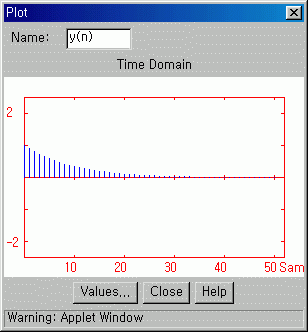
Graph 2
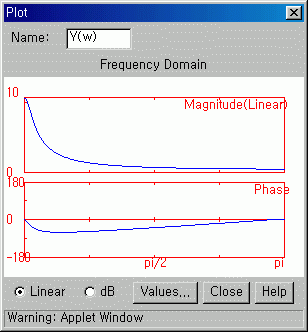
Graph 3
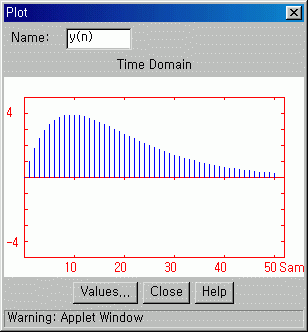
Graph 4
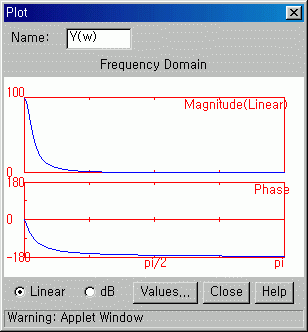
Graph 5
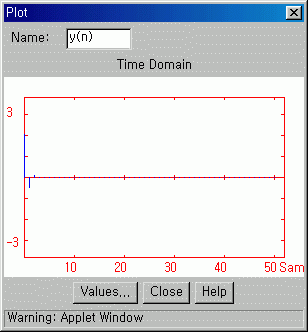
|





